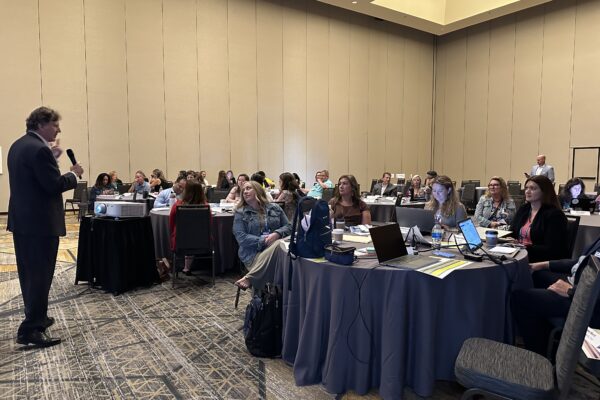Resilience in the Heat of Crisis: LADWP’s Lessons from the Pacific Palisades Fire
By Russ Henderson, Director of Research
When the Pacific Palisades fire tore through Los Angeles in January 2025, it wasn’t just another emergency activation for LADWP. It was a defining moment.
The blaze consumed more than 23,000 acres, destroyed thousands of homes, and put extraordinary pressure on both the power grid and the city’s water system. For LADWP, the largest municipal utility in the country, this was their Katrina, their Andrew, their Sandy.
In just two weeks at PowerUp: Chartwell’s Outage Conference in Dallas, Joseph Ramallo, LADWP’s Chief Customer Officer, and Zoraya Oliver-Griffin, Chief Climate Resiliency and Emergency Management Officer, will take the stage for a keynote session: Resilience in the Heat of Crisis: Lessons from LADWP’s Wildfire Response.
Their story is one every utility professional should hear.
A Crisis That Changed the Playbook
Ramallo explained that LADWP initially expected a large outage event. What unfolded instead was a cascading disaster that transitioned from a power emergency to a water emergency, magnified by misinformation, public scrutiny, and even direct threats to staff.
Ramallo noted, “Immediately after the fire, the story quickly evolved in ways no one expected. Our story quickly went from one about wildfire response and tragedy to attacking DEI and even threats against our staff. “We fielded questions on all fronts, including why we didn’t de-energize power lines and about our wildfire plans. The different threads of the story “challenged everything our communications team knew about responding to a crisis.”
Amid the chaos, LADWP learned that traditional media alone could not carry their story. Instead, they leaned on trusted voices — both seasoned investigative and radio reporters and local influencers such as Evan Lovett of LA in a Minute — to amplify accurate information and counter misinformation. “We used local social media influencers to help respond,” Ramallo recalled. “In some cases, experts elsewhere in the country helped us tell the story accurately.”
Putting Customers First
One of the most striking aspects of LADWP’s response was how quickly the utility stood up customer-focused relief measures: distributing water locally, pausing billing, promising to issue $50 water flushing credits, and protecting solar credits for customers rebuilding their homes.
That responsiveness was no accident. Ramallo credits LADWP’s leadership culture, starting with CEO Janice Quiñones, who created the Chief Customer Officer position to ensure that customer needs were represented at the executive table. “Her entire approach is ‘customers first,’” Ramallo said. “It’s not just about running the utility, it’s how are you doing it in a way that ensures your customers can benefit, that your customers have the information, the services and the support that they need?”
This philosophy also shaped LADWP’s water quality communications. When the system faced its first citywide “do not drink” notice in two decades, the utility launched an ArcGIS StoryMap to clearly explain water zones and publish test results – ensuring promised transparency and instilling confidence in our customers. Ramallo said that when “customers wanted to see the water quality results,” they were shared “in a way that people could easily access them.” The result: LADWP restored safe water in two months, compared to the two years it took Paradise, CA, after the Camp Fire – and customers had all of the water quality data to see for themselves that their water was safe to drink.
Managing Scrutiny and Politics
Like many utilities, LADWP faced not only customer frustration but political heat. The Los Angeles City Council demanded answers about why certain neighborhoods were without power for extended periods. For Ramallo, who has worked in multiple mayoral administrations, these conversations were not adversarial but essential.
“Policymakers are under enormous pressure from constituents,” he said. Ramallo also noted that the “best thing you can do is answer the phone every single time” and rely on council offices as “our eyes and ears as to what’s working and what’s not. And so, for me, that was tremendously valuable input. It helped us focus where help and information were needed most. That helps us build trust over time.”
Building Toward Resilience
The January 2025 wildfires accelerated LADWP’s resilience agenda. The utility is now reexamining everything from undergrounding power lines to redesigning the Santa Ynez Reservoir, which became a lightning rod of misinformation during the crisis.
Why This Session Matters
For utilities across North America, LADWP’s experience underscores a universal truth: crisis communications are no longer just about outage updates. They’re about managing multiple narratives that can become reputational threats, partnering with influencers, and sustaining trust in a hyper-skeptical and political environment, all while keeping customers at the center.
At PowerUp, Joe and Zoraya will share not just what went wrong and what went right, but how LADWP is using the lessons of the Pacific Palisades fire to build a stronger, more resilient Los Angeles.
This is not just a case study, but a must-hear story for any utility leader preparing for the next crisis. We look forward to seeing you there.
Learn more about the Emergency Management Council by contacting Tim Herrick.
You may also like these blog posts:
- Your Emergency Plan Isn’t Ready Until It’s Tested
- LUMA Energy Wins Gold for Emergency Management Excellence: A Transformative Journey Toward Resilience
- August 2025: The First Emergency Management Awareness Month — Why Utilities Should Take Notice





